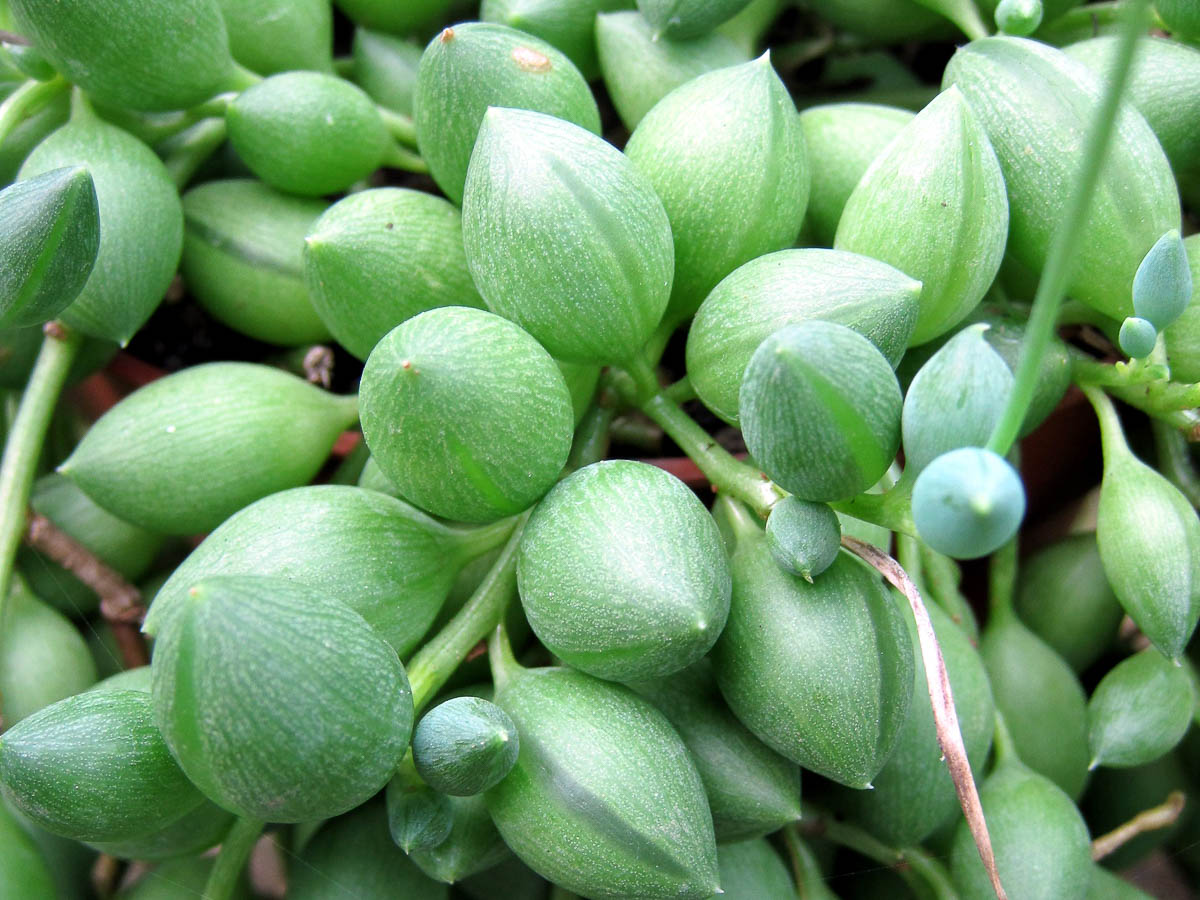String of Beads
String of Beads (Curio herreanus)
Other common names: Gooseberry

String of beads is a trailing succulent with thick spherical fleshy leaves that are arranged along its stems. Each shiny light green leaf has a transparent ‘window’ that allows light to penetrate the leaf interior to allow for photosynthesis while minimising water loss.
A perennial succulent vine, its long pendulous stems make it an attractive plant for growing in hanging or tall planters.
Sun and soil needs:
String of beads thrive in 4-6 hours of indirect sunlight or around 4 hours of direct sun. Plants do best in pots with sandy soil at least 10cm deep. This plant is vulnerable to root rot, and will need soil with plenty of inorganic soil amendments for good drainage.
Growing:
String of beads does not need frequent fertilising. A balanced slow releasing fertiliser applied every 6 months would be sufficient. Allow the soil to dry out completely before watering. This plant does well with bottom watering.
The leaves of String of Beads can split open if it is suddenly exposed to a lot of water, and is thus best kept out of direct rain, especially during the monsoon season.
Propagation:
String of beads can be grown from stem cuttings rooted in soil.
Common problems & solutions:
This plant is largely resistant to most pests.
This plant is susceptible to root rot if grown in waterlogged soil. To prevent rot, allow the plant to dry out between waterings and ensure that there is enough air circulation.
Mealy Bugs often infest the plant if it has underlying problems like waterlogging. Mechanical pest control methods like pruning the infested parts are the best methods for managing these pests in the short term, but resolving the underlying problem will prevent them in the long term.

